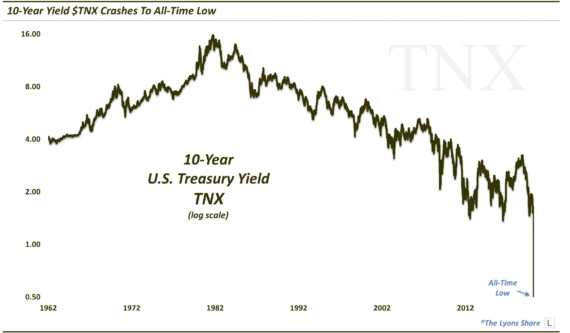Global Shipping Rates Run Aground

A key indicator of shipping rates just made an all-time low.
With speculation running wild surrounding the first potential rate hike in 9 years at the upcoming December Fed meeting, the inflation discussion has been at the fore. Since inflation represents half of the Fed’s duel mandate, this is not a surprise. Except for perhaps a few outlier views, most characterizations of the current inflation landscape seem to range from “approaching moderate inflation” to “rampant deflation”. One indicator that would fall into that latter category is the Baltic Dry Index (BDI).
The BDI is a composite of various global shipping rates tied to the movement of raw materials. Thus, it is measure of inflation of sorts tied to global trade conditions. In that sense, deflationary forces cannot be overstated at this point as the BDI has just dropped to its lowest level ever.

In January, amid the deflationary spiral in commodity prices, we posted a note showing the BDI at its lowest levels outside of a few months in 1986. The index would get as low as 509 before rebounding quite strongly, as it had always done following forays down to the 700 level or worse. In July, we noted that the BDI had actually doubled since its lows early in the year to over 1000. In that July post, we pondered whether the bounce was a ray of hope for global shipping and trade – or if it was merely dead-cat, mean-reversion bounce. Our sense was that it was the latter.
While the recent 100% jump in the Baltic Dry Index, on the surface, would appear to be a ray of light for global shipping activity, and perhaps the global economy at large, we are not so sure. Upon examination, the index appears to exhibit purely cyclical characteristics that outweigh the shorter-term economic and inflationary trends at a given time. Thus, it seems be more prone to “reversion to the mean” than a deep economic “meaning”.
In addition, after solid bounces during the spring, commodity prices were back on a downward trend with many of them approaching their lows from early in the year. We were skeptical, given those falling prices, that the BDI bounce was tied to anything fundamental. Indeed, we see now that that was likely the case as the BDI has caught up (or down) to commodity prices. As of Friday, November 20, the index had dropped to 498, the first time it has ever been below 500.
Is there a larger message being sent here? Well, as we have discussed previously, due to its short-term cyclical tendencies, we’ve found it less than reliable as an economic indicator. That said, there is no doubt that the cycles recently have resulted in lower highs and lower lows. Therefore, if there is any economic value to the BDI outside of simply a read on shipping rates, the trend is not a positive one for the overall global trade scene. The impact may be especially negative on the markets we’ve found to be most highly correlated to the BDI, China and Europe.
Whatever the larger economic message (if any) stemming from the BDI, an all-time low in shipping rates is certainly not evidence of the elusive inflation that many policy makers around the globe are pining for.
________
“SHIPWRECK” photo by Marckles55.
More from Dana Lyons, JLFMI and My401kPro.
The commentary included in this blog is provided for informational purposes only. It does not constitute a recommendation to invest in any specific investment product or service. Proper due diligence should be performed before investing in any investment vehicle. There is a risk of loss involved in all investments.


